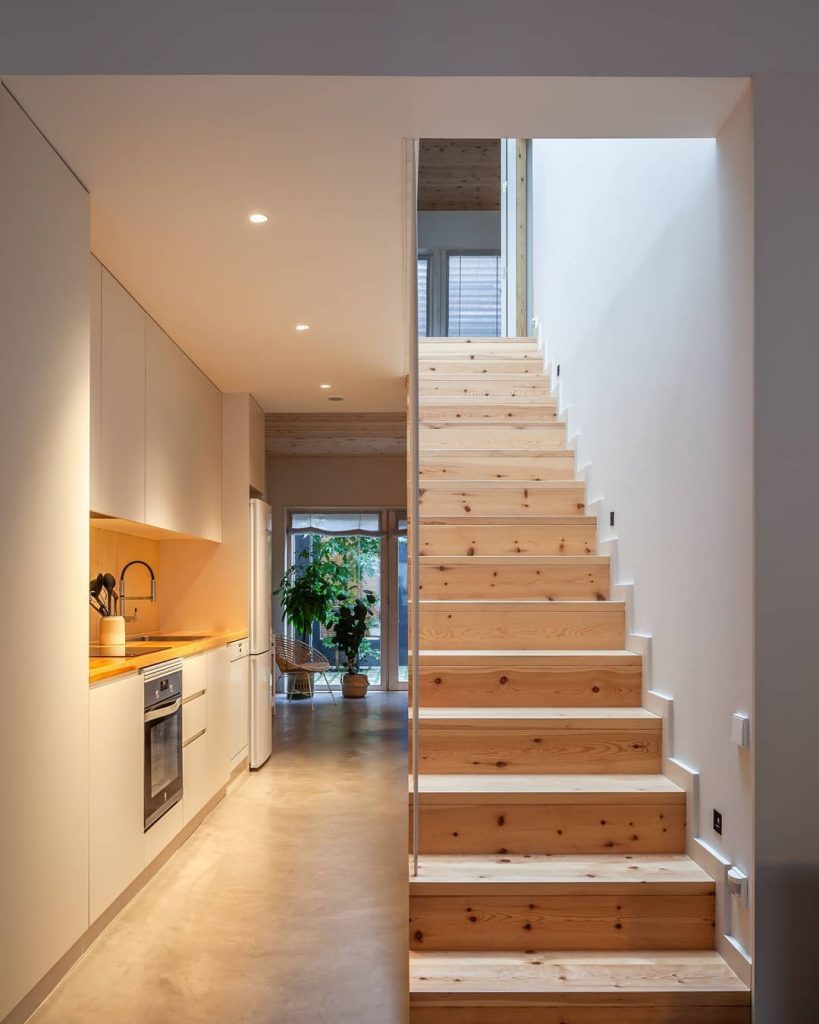 Blauhaus, a company specialised in designing and building efficient and sustainable homes between party walls in urban centres, talked to us about its original proposal. An idea that originated in the city as a solution to an urban challenge, namely to recover Catalonia’s traditional English-style houses. These single family homes with a narrow façade, generally characterised by a considerable buildable depth and a rear courtyard, can be found in the centre of many cities, albeit in a run-down state and in need of renovation
Blauhaus, a company specialised in designing and building efficient and sustainable homes between party walls in urban centres, talked to us about its original proposal. An idea that originated in the city as a solution to an urban challenge, namely to recover Catalonia’s traditional English-style houses. These single family homes with a narrow façade, generally characterised by a considerable buildable depth and a rear courtyard, can be found in the centre of many cities, albeit in a run-down state and in need of renovation
“The aim of our project is to bring city centres back to life. Many people, who have been forced to move to the outskirts, would really prefer to live in these spaces, filled with old houses built in the early 20th century but which are in a poor state of repair: they are damp, cold and poorly insulated, and many have been boarded up and abandoned, simply because their owners don’t know what to do with them”, explains the architect, Roser Saus.
Blauhaus’ objective is to transform these run-down houses located in prime locations into contemporary homes, offering impeccable designs tailored to meet the needs of today’s families: sustainable and healthy homes with low energy consumption that blend into the cityscape. They intend to achieve all this in record time for a fixed and affordable price, based on the concept of replicability. “A house can be completed in just 4 months for a fixed budget that guarantees no hidden surprises”.
Wood

And it is precisely here that wood comes into play; a material that adapts perfectly to current trends in architecture. And when it comes to building in cities between party walls, then the benefits of wood are clear.
This is the conclusion reached by Blauhaus, convinced that wood is the perfect material for creating a housing prototype in line with its values. “We have a portfolio of various types that, depending on a series of conditioning factors, provide a template for the majority of projects, as the sites are similar. This is a real time-saver during the project phase”. Building in wood also speeds up the construction process, as well as ensuring the desired attributes.
Blauhaus houses receive maximum energy ratings for both CO2 emissions and non-renewable primary energy consumption as the low heating and air conditioning requirements are covered by renewable energies.
“Another key reason for choosing wood is that it is the material that best complies with insulation and noise regulations in reduced areas. Making the most of the available space is essential on this type of sites between party walls”.
Collaboration with House Habitat

On the right, the architect Roser Saus
Blauhaus and House Habitat’s first joint venture was the construction of a 175 metre square three-storey building between party walls with a CLT wooden structure in Sabadell.
“House Habitat’s know-how and expertise in wood construction makes it the perfect partner, enabling us to successfully meet the project targets: speed, energy efficiency, comfort, sustainability and the agreed price”.
The expectations this model has raised indicate that there will be more joint projects in the future. Indeed, the Sabadell building receives visits on practically a daily basis. “It’s true that anyone who is not familiar with wood is initially rather sceptical…but as soon as they enter the building, they are immediately overcome by truly unique sensations”, adds Roser Saus.

The future of the city… is wood
For Roser Saus, wood is an ideal material that fully meets the needs of Blauhaus’ projects. “This material has all the necessary characteristics to become the best building option due to its energy efficiency and sustainability qualities. And this is applicable not just to the construction of housing between party walls, where we have already tested its benefits, but it is also an excellent solution for multi-family buildings in cities”, she concludes.






